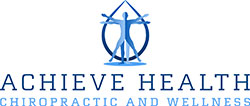Are You At Risk For Osteoporosis?
Osteoporosis is a disease of low bone mass and reduced bone strength that affects 10 million Americans over the age of 50. Another 34 million have decreased bone mass (osteopenia) that puts them at risk for osteoporosis.
Each year fractures related to osteoporosis will affect more women than heart attacks, strokes, breast cancer, uterine, ovarian and cervical cancer combined. One in three women and one in four men will have an osteoporosis related fracture in their lifetime. Over 14 billion dollars are spent yearly in the U.S. on medical, hospital, nursing home care and lost productivity from osteoporotic fractures.
Osteoporosis means bone (osteo) that is porous (porosis). Bone is a living tissue just like skin, blood cells or muscles. From birth, all tissues undergo a process in which new cells form and old cells are carried away. In bone, this process is called remolding. It is carried out by osteoblasts (bone building cells) and osteoclasts (cells that carry the old bone away).
During childhood, the bone building calls work much harder that the osteoclasts, which accounts for rapid growth in our younger years. After peak bone mass is reached, at about the age of 30, the builder cells tend to slow down. By late midlife, the cells that carry old bone away are often working at a (osteopenia) of bone mass. Osteoporosis occurs when bones break easily, sometimes even with slight movement. Factors that you can change include diet, exercise, and smoking and excessive alcohol use.
How Can I Decrease My Risk?
Eat a well balanced diet: A well balanced diet is the basic for good health. From childhood through old age, bones need calcium and vitamin D to grow and stay strong. The following chart shows the recommended calcium and vitamin D intake for Adults and Older Children. Infants, younger children, and pregnant women have different needs.
|
Recommended Calcium & Vitamin D Intake |
||
| Age | Calcium (milligrams) | Vitamin D (international units) |
| 9-18 | 1,300 | 200 |
| 18-50 | 1,000 | 200 |
| 51-70 | 1,200 | 400 |
| Over 70 | 1,200 | 600 |
Do Exercise: Weight bearing exercise makes bones stringer. Walking and exercise with light hand weights are a great way to help bones stay strong. Even if you are unable to walk, there may be weight bearing exercise that you can do.
Avoid Excessive Alcohol use: Excessive alcohol interferes with absorption of important nutrients including calcium and vitamin D. Also, excessive alcohol increases the risk for falls and fractures.
Osteoporosis and Chiropractic
Osteoporosis is something that can cause pain, heartache and severely limit your daily activities, especially if it becomes severe. The good news is that you can prevent it from becoming severe. One good thing is that you can still receive chiropractic treatment despite having osteoporosis. They can modify the treatment but there is always a chiropractic treatment method that will suit you.


